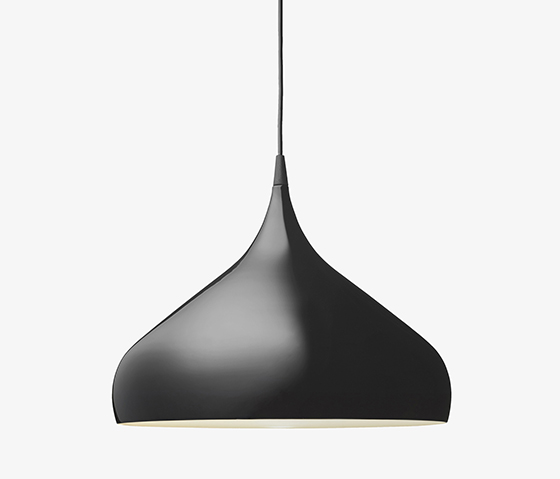Material Tendencies: Benjamin Hubert
Text by Anita Hackethal
Berlin, Germany
17.10.16
The young, experience-driven industrial designer likes to create things that people would like to live with on a daily basis.
Architonic caught up with Benjamin Hubert – who is particularly interested in material research, technology and innovation in both the physical and digital worlds – at this year's London Design Festival.
Could you say a few words about your 'Foil' installation?
Foil is our first piece of public artwork in collaboration with German manufacturer Braun. It is a 20-metre kinetic, undulating LED reflecting piece of sculpture, composed of 50,000 mirror-finished, stainless-steel triangles, which runs the length of the Tapestry Galleries at the V&A. 50,000 points of lights scattered in the space create slowly morphing patterns on the walls and the ceiling, as the panels move. Accompanied by sound, this multi-sensory installation emulates some of the technology, performance and engineering of a Braun shaver. The whole experience is about some of the poetry, emotions and mechanics of a shaver.
'Foil' installation in collaboration with Braun, V&A Museum, London – Photo © Ed Reeve
Which material would you choose if you had to restrict yourself to working with just one for the next three years?
As a studio, we love playing with materials. It is one of the ways we started five or six years ago. We were always asked which one is our favourite material and my answer is always the same: whichever material resolves the problem best. But if you were to ask me to pick one, it would be no materials. It would be to design a service, to design a system and a service which helps people in their lives that doesn’t require hardware. So we do a lot of work in the digital space in the studio and it would be in that arena.
What comes first within the design process – the shape or the choice of material?
When we are working on a project, we do not design anything to start with. We ask a lot of questions and we get a lot of insights from the stakeholders of the projects. It can be the consumer, the retailer, the brand that is manufacturing. We get all of these voices and then we find the opportunities around that. So identifying opportunities from the inside to give us values that we then try to embody in features and formats of the project. We are very strategic in our approach.
As a group of Designers at Layer we are always responding to the world around us, what we think the world is going to look like in the coming future and the far future. So we are constantly collecting information and systems and technology and materials and voices and cultural stimulus, ... always to build this database of rational inspiration to drive our future projects.
Would you like to say something about the new Pair Chair?
At the London Design Festival, we were launching a project we‘ve been working on for the last three years – the Pair Chair for Fritz Hansen. It is a system of modular components that come together to give people the choice of structuring their piece of furniture in a way they want – through colour and finish, types of armrest and materiality. The Pair Chair is a combination of industrialised plastics, injection-moulded backrests in polycarbonate in combination with traditional materials from Fritz Hansen in plywood and steel bases. So, for us, Pair Chair is about celebrating the tradition of the company. The design language is some of the material and then updating it with a systematic thinking and a new sense of material combinations.
....

























